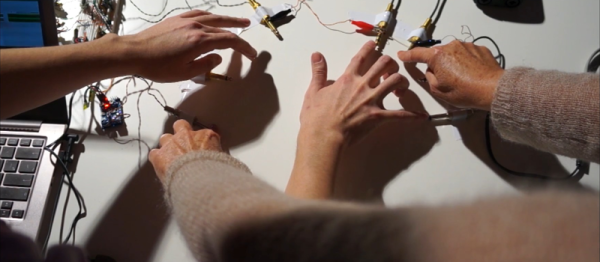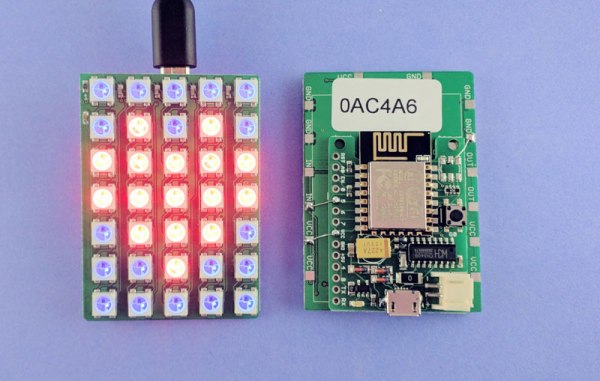Whether it’s trying to make contacts across the planet with a transmitter that would have a hard time lighting an LED, or blasting signals into space and bouncing them off the moon, amateur radio operators have always been on the forefront of communications technology. As mankind took to space in the 1950s and 1960s, hams went along for the ride with the first private satellites. But as successful as the OSCAR satellites were, they were still at best only beacons or repeaters in space. What was needed was the human touch – a real live operator making contacts with people on the ground, showing the capabilities of amateur radio while generating public interest in the space program. What was needed was a ham in space. Continue reading “Hams In Space Part 2: The Manned Spaceflights”
Day: November 1, 2016
FingerRing Is Simplest Multichannel Mixer
It’s hard to make an audio mixer with any less technology than FingerRing (YouTube video, embedded below). We’re pretty sure that [Sergey Kasich] isn’t going to get a patent on this one. But what he does get is our admiration for pushing a simple idea far enough that it’s obviously useful.
The basic idea is transmitting signals using the human body as a conductor. What [Sergey] does is lay out multiple sound sources and sinks on the table, and then play them like a mixer made musical instrument. Pressing harder reduces the resistance, and makes the sound louder. Connecting to two sources mixes them (in you). Watch the video — he gets a lot of mileage out of this one trick.
Continue reading “FingerRing Is Simplest Multichannel Mixer”
Web Matrix Control Proves Power Of ESP8266
LED matrix projects are all over the place, but this one is interesting for its simplicity: it’s an LED matrix that is driven straight from an ESP8266 board. [Ray] put it together as a quick project for his students to teach the basics of LED programming.
It’s built using a WS2812 LED matrix board he designed himself and his own ESPToy ESP8266 dev board. But the gist of the hardware is simply an ESP8266 and some WS2812’s. Where this gets interesting is with the user interaction side of things. The ESP makes WiFi and web serving easy, and [Ray] has build a simple HTTP GET API into the firmware. This is a great combination for the web dashboard and JavaScript-based animation programs [Ray] is demonstrating in the video below.
Just get on the same network and load up the module’s WiFi address for a graphical representation of the 5×7 LED matrix. Pick a color, turn pixels on or off, or choose a predefined pattern and send it to the hardware. This is a powerful way to get use input and with this as a guide it’s fast to set up for pretty much an application you can think of. Just work your way through the documents he put together for the workshop (Zip file link), including all of the code and the slides he used to run the workshop.
Continue reading “Web Matrix Control Proves Power Of ESP8266”














